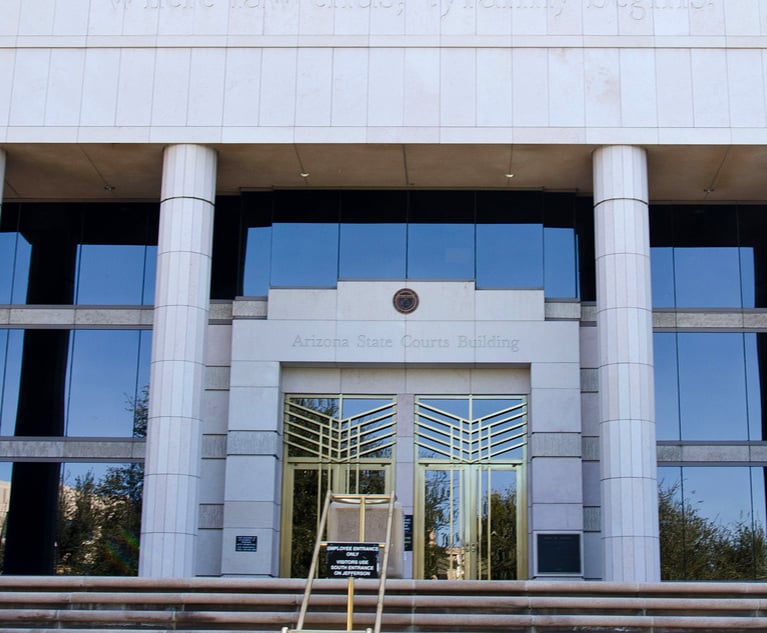Commentary: Willkie and Dickson Minto alliance - they do protest too much
On paper, an alliance between Willkie Farr & Gallagher and Dickson Minto makes perfect sense. Talk to anyone in the market and the most common response is, "well, they had to do something", a claim that is made interchangeably for both firms.
July 16, 2008 at 10:39 PM
4 minute read
On paper, an alliance between Willkie Farr & Gallagher and Dickson Minto makes perfect sense. Talk to anyone in the market and the most common response is, "well, they had to do something", a claim that is made interchangeably for both firms.
After all, the UK has long been the glaring hole in Willkie's European practice and, while its core private equity market has developed a significantly more international outlook over the last five years, many would contend that Dickson Minto's UK-only stance is nearing the end of its shelf life.
But if the tie-up is as good as it looks, why has it received such a cool reception in the private equity community, even allowing for inter-firm rivalry?
Clearly there are benefits for both parties. For Willkie, the alliance immediately gives it numbers on the ground – the one thing it has patently failed to achieve in the UK, despite its success in Paris and, to a lesser extent, Italy and Germany.
Willkie has made no secret of its review of its City office and its desire to expand it, but despite this it currently has just one full time partner in London (Jon Lyman) and one who splits his time between the UK and Paris (Eduardo Fernandez).
Willkie is also lacking the private equity reputation it has on the continent, so having access to a ready-made team of lawyers working with such clients as BC Capital Partners and Charterhouse – the Anglo-Scottish firm's marquee clients – is advantageous.
The pitfalls come down to what the relationship delivers in practice. The deal is expected to operate as a largely exclusive alliance with the typical caveat that the pair can refer to other firms if a client requests it.
Critics have highlighted the danger that Willkie, which has worked regularly with Travers Smith, could miss out on referrals. Set against that, though European buy-out houses have begun to venture tentatively into the US, the flow of referrals stateside are not likely to be that substantial.
Also those who argue that Dickson Minto itself may not give Willkie the numbers it needs on the ground, as the boutique lacks the depth of support that would allow either firm to truly take on its rivals.
Worse still, the alliance fails to deal with the biggest problem facing Dickson Minto: succession. An internal strategy document drawn up six years ago acknowledged the challenges facing the firm in terms of shifts in the market.
The document observes that failure to find a convincing answer to the international question would leave it "milking the franchise" in the short- to medium-term. Past that, it concluded that the "status quo is not sustainable in the long-term".
And if that was true six years ago, it would seem doubly so now that respected founders Alastair Dickson and Bruce Minto are reaching the age when most serious deal-makers start to scale down their commitments.
Given this context, the claim that the tie-up is the end of the road, with a more substantive union not being even contemplated, is difficult to take seriously. Nevertheless, that is the line.
Willkie's Daniel Hurstel comments: "We made a choice to go for an alliance and we are very happy with it. History shows alliances can work and we will make this a great success. It's an alliance full stop, not a first step to anything else. We have a particular culture so we haven't paid much attention to the merger idea".
Time will tell, but not everyone is convinced.
This content has been archived. It is available through our partners, LexisNexis® and Bloomberg Law.
To view this content, please continue to their sites.
Not a Lexis Subscriber?
Subscribe Now
Not a Bloomberg Law Subscriber?
Subscribe Now
NOT FOR REPRINT
© 2025 ALM Global, LLC, All Rights Reserved. Request academic re-use from www.copyright.com. All other uses, submit a request to [email protected]. For more information visit Asset & Logo Licensing.
You Might Like
View All
KPMG's Bid To Practice Law in US On Hold As Arizona Court Exercises Caution

Combative Arguments at EU's Highest Court Over Google's €4.13B Antitrust Fine Emphasize High Stakes and Invoke Trump
4 minute read
Law Firms 'Struggling' With Partner Pay Segmentation, as Top Rainmakers Bring In More Revenue
5 minute readTrending Stories
- 1Uber Files RICO Suit Against Plaintiff-Side Firms Alleging Fraudulent Injury Claims
- 2The Law Firm Disrupted: Scrutinizing the Elephant More Than the Mouse
- 3Inherent Diminished Value Damages Unavailable to 3rd-Party Claimants, Court Says
- 4Pa. Defense Firm Sued by Client Over Ex-Eagles Player's $43.5M Med Mal Win
- 5Losses Mount at Morris Manning, but Departing Ex-Chair Stays Bullish About His Old Firm's Future
Who Got The Work
J. Brugh Lower of Gibbons has entered an appearance for industrial equipment supplier Devco Corporation in a pending trademark infringement lawsuit. The suit, accusing the defendant of selling knock-off Graco products, was filed Dec. 18 in New Jersey District Court by Rivkin Radler on behalf of Graco Inc. and Graco Minnesota. The case, assigned to U.S. District Judge Zahid N. Quraishi, is 3:24-cv-11294, Graco Inc. et al v. Devco Corporation.
Who Got The Work
Rebecca Maller-Stein and Kent A. Yalowitz of Arnold & Porter Kaye Scholer have entered their appearances for Hanaco Venture Capital and its executives, Lior Prosor and David Frankel, in a pending securities lawsuit. The action, filed on Dec. 24 in New York Southern District Court by Zell, Aron & Co. on behalf of Goldeneye Advisors, accuses the defendants of negligently and fraudulently managing the plaintiff's $1 million investment. The case, assigned to U.S. District Judge Vernon S. Broderick, is 1:24-cv-09918, Goldeneye Advisors, LLC v. Hanaco Venture Capital, Ltd. et al.
Who Got The Work
Attorneys from A&O Shearman has stepped in as defense counsel for Toronto-Dominion Bank and other defendants in a pending securities class action. The suit, filed Dec. 11 in New York Southern District Court by Bleichmar Fonti & Auld, accuses the defendants of concealing the bank's 'pervasive' deficiencies in regards to its compliance with the Bank Secrecy Act and the quality of its anti-money laundering controls. The case, assigned to U.S. District Judge Arun Subramanian, is 1:24-cv-09445, Gonzalez v. The Toronto-Dominion Bank et al.
Who Got The Work
Crown Castle International, a Pennsylvania company providing shared communications infrastructure, has turned to Luke D. Wolf of Gordon Rees Scully Mansukhani to fend off a pending breach-of-contract lawsuit. The court action, filed Nov. 25 in Michigan Eastern District Court by Hooper Hathaway PC on behalf of The Town Residences LLC, accuses Crown Castle of failing to transfer approximately $30,000 in utility payments from T-Mobile in breach of a roof-top lease and assignment agreement. The case, assigned to U.S. District Judge Susan K. Declercq, is 2:24-cv-13131, The Town Residences LLC v. T-Mobile US, Inc. et al.
Who Got The Work
Wilfred P. Coronato and Daniel M. Schwartz of McCarter & English have stepped in as defense counsel to Electrolux Home Products Inc. in a pending product liability lawsuit. The court action, filed Nov. 26 in New York Eastern District Court by Poulos Lopiccolo PC and Nagel Rice LLP on behalf of David Stern, alleges that the defendant's refrigerators’ drawers and shelving repeatedly break and fall apart within months after purchase. The case, assigned to U.S. District Judge Joan M. Azrack, is 2:24-cv-08204, Stern v. Electrolux Home Products, Inc.
Featured Firms
Law Offices of Gary Martin Hays & Associates, P.C.
(470) 294-1674
Law Offices of Mark E. Salomone
(857) 444-6468
Smith & Hassler
(713) 739-1250









